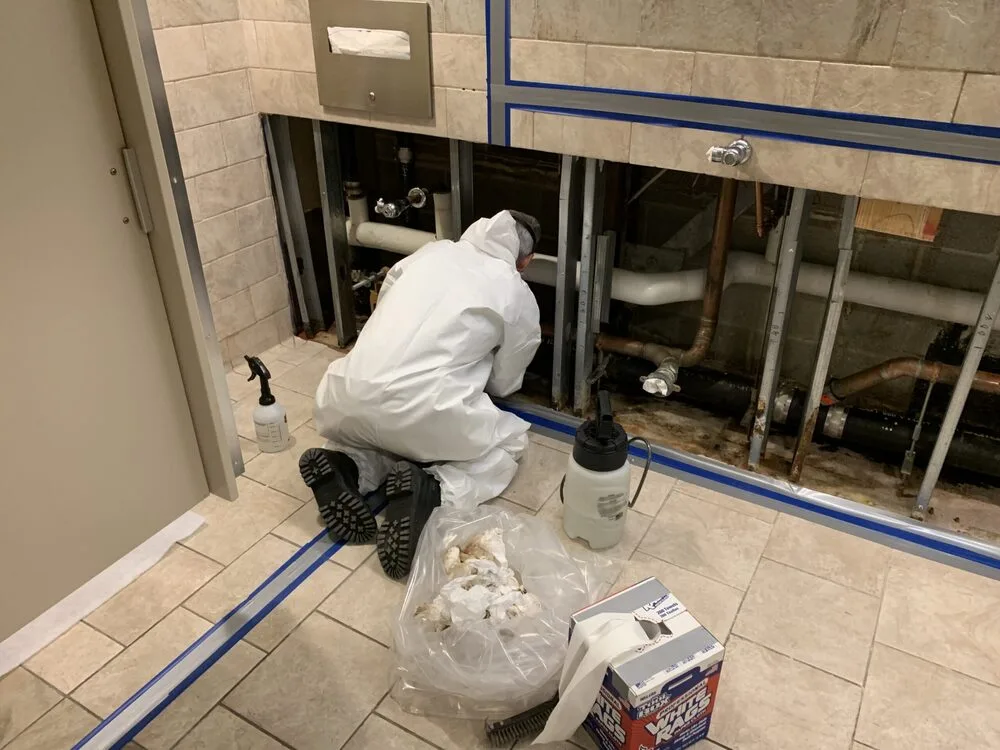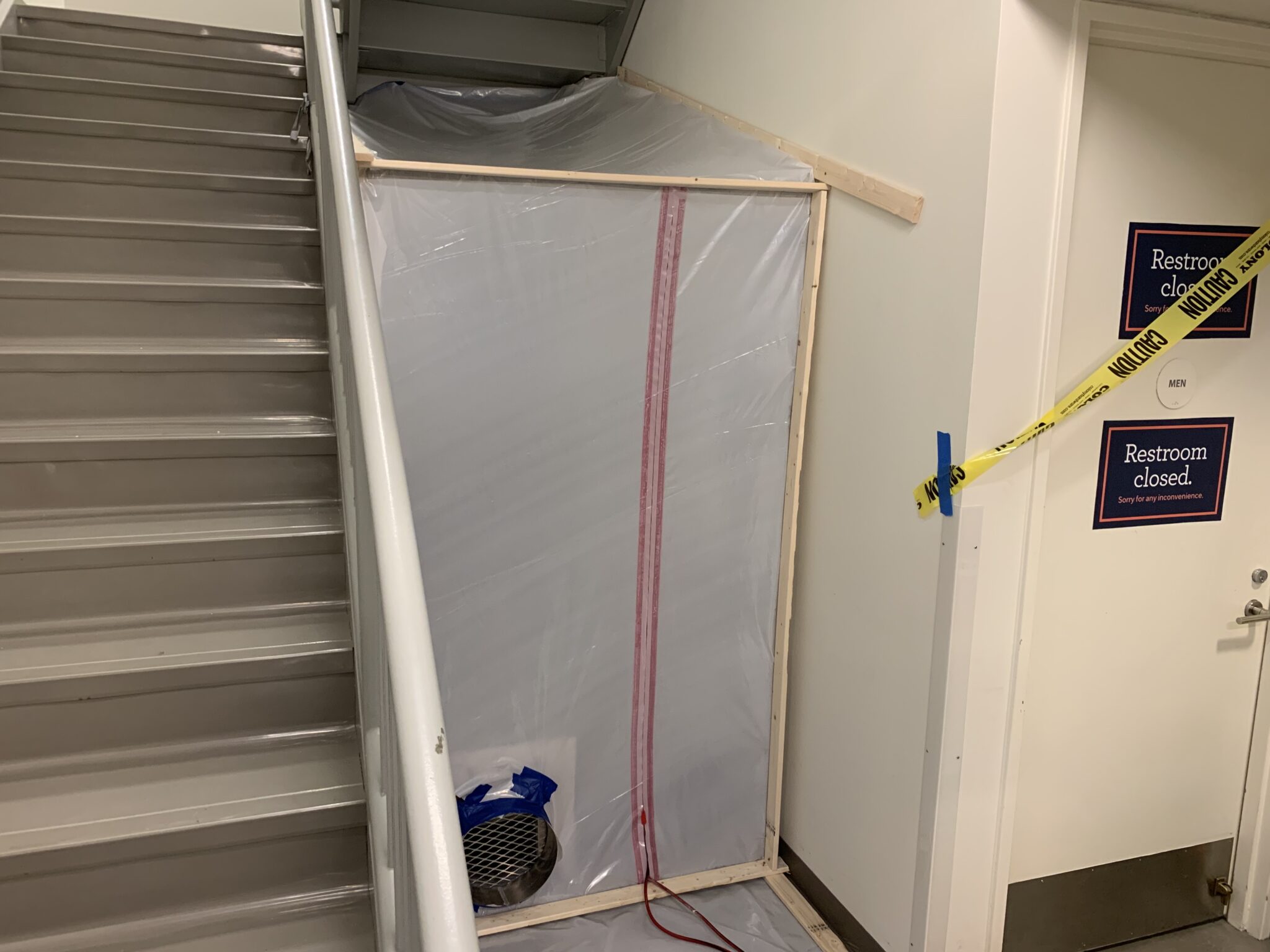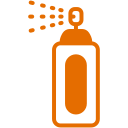Commercial Mold Remediation
INX Indoor Air Quality
We have been proudly servicing Commercial & Municipal clients including hospitals, colleges, universities, school districts, manufacturing, pharmaceuticals, hotels, nursing homes, and restaurants for over 20 years. During that time we have successfully remediated mold issues in thousands of buildings with the main goal of helping our customers and their clients breathe easy.
Schools, Colleges and Universities have been calling INX for over two decades to help them remediate mold in many areas of their facilities. We have successfully remediated mold in classrooms, libraries, auditoriums, dorm rooms, hotel rooms and many other areas within these buildings. We understand that mold is a delicate subject and the importance of effectively fixing a mold issue without causing alarm to students, faculty, employees or customers is of utmost importance.

The first and most important step within our proven mold remediation process is containment construction.

The purpose of the containment is to seal off the remediation area under negative pressure to minimize the potential for cross contamination to clean areas during the remediation process. These containments also double as a barrier from anyone who might still be working or operating within your building. We typically use opaque heavy plastic and temporary wood framing to construct these units so that anyone who is passing won’t be distracted by our operation or equipment. A HEPA (High efficiency Particulate Air) Air Scrubber is placed inside the containment and exhausts out to create a negative pressure differential in the containment. Our trained Mold Technicians have worked hundreds of jobs in the history of our operation under these circumstances and are familiar with the importance of being unnoticed.
Some of our happy customers include:
- University of Delaware
- Moravian College
- Gettysburg College
- West Chester University
- Central Bucks School District
- Meridian Bank
- Kendal-Crosslands Communities
- Inn at Penn
- US Mint
- QVC
- AmeriHealth
- Township of Marlboro
Some of our happy customers include:
The 1st step is always assessment.
If this is the case, we can help by following our Seven C’s to effective Mold Remediation – Containment, Contents, Cutting, Cleaning, Coatings, Clearance & Closing!

Containment Construction
Containment Construction

Contents Cleaning and Protection
Contents Cleaning or Protection

Cutting & Demolition
Cutting & Demolition

Cleaning
Cleaning

Coating
Coating

Clearance Testing
Clearance Testing

Closing Report
Closing Report
Sample Closing report
FAQ
Mold remediation refers to anything involving in the process of removing mold from an indoor environment. This includes everything from mold inspection and mold testing to mold removal, materials cleaning and restoration, and mold prevention. Mold remediation can be done in both residential and commercial properties, but naturally, commercial mold remediation only refers to projects that take place in commercial buildings.
INX Indoor Air Quality also offers commercial duct and dryer exhaust, both of which can play a role in preventing and removing mold as well as improving the overall air quality in an indoor environment. If you have interest in any of these additional services, you are more than welcome to give us a call or read more on our website.
Call INX Indoor Air Quality today to speak with a Mold Professional
about how we can help you Breathe Easy!


